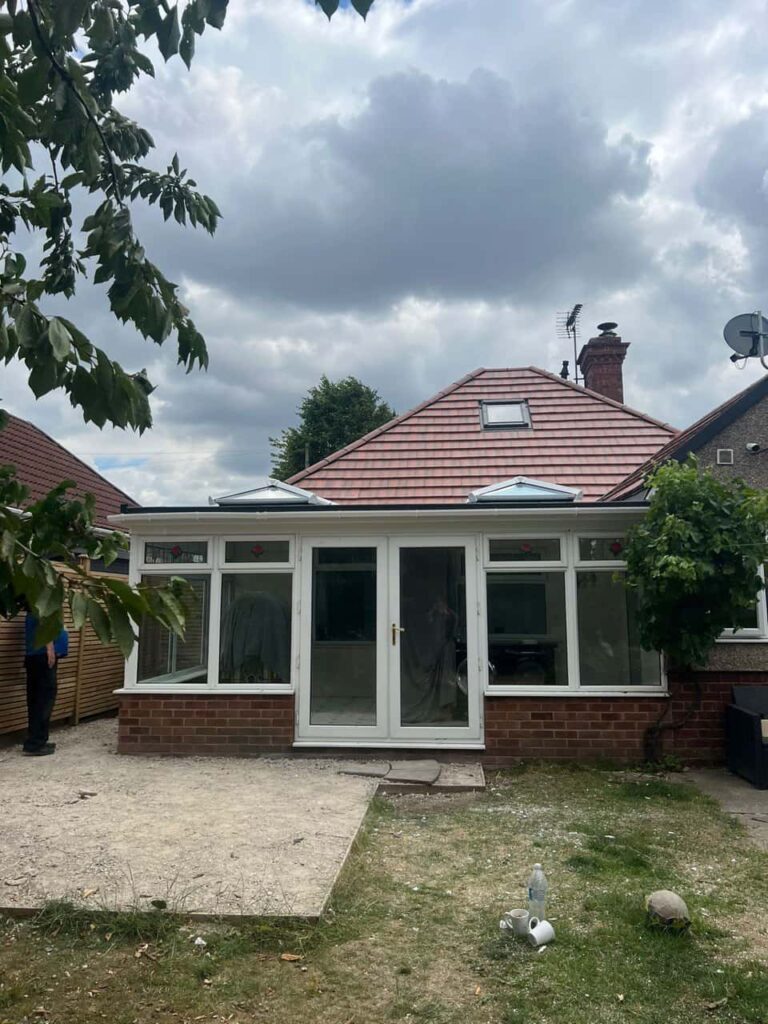Roof valleys are one of the most critical yet vulnerable areas of any roof structure. They play an essential role in directing rainwater off your roof and into the guttering system, but because of their design and function, they’re also a frequent source of leaks. At Oxted Roofing Repairs, we often receive calls from homeowners across Oxted, Surrey dealing with persistent leaks that trace back to faulty or worn roof valleys.
Understanding why these leaks occur — and how to prevent them — can help you maintain a watertight, durable, and long-lasting roof.
What Are Roof Valleys?
A roof valley is the internal angle formed where two roof slopes meet. It’s essentially a channel that guides rainwater and debris down towards the gutters. Because valleys handle more water flow than almost any other section of the roof, they’re subject to increased wear, pressure, and debris build-up.
There are several common valley types used in British roofing:
- Open valleys: Featuring a visible metal channel (often lead or galvanised steel) that directs water flow.
- Closed valleys: Where tiles or slates overlap, concealing the valley beneath.
- Woven valleys: Created by interlacing shingles or tiles across the valley line.
Each has its advantages, but all share the same risk — if water is not properly directed, leaks can quickly develop beneath the surface.
Why Leaks Around Roof Valleys Are So Common
1. Heavy Water Flow Concentration
Valleys are designed to handle a large volume of rainwater, especially during downpours. Over time, this constant flow can wear down protective layers, corrode metal flashing, or erode mortar bedding. Even a small crack or gap can allow water to penetrate beneath the tiles and into the underlayment, causing gradual leaks that are difficult to detect until visible damage appears indoors.
In areas like Oxted, where rainfall is frequent and often heavy, this concentrated flow makes valleys a high-risk point for leaks.
2. Blocked Valleys and Debris Build-Up
Fallen leaves, moss, and dirt can easily accumulate in roof valleys, especially on pitched roofs surrounded by trees. When debris builds up, water flow becomes restricted, causing pooling or backflow beneath the tiles.
This trapped moisture weakens the underlay and fixings, leading to leaks over time. Regular roof maintenance and clearing of valleys can significantly reduce this problem, something that Oxted Roofing Repairs strongly recommends for properties throughout Oxted, Surrey.
3. Faulty or Aged Flashing
The metal flashing that lines many roof valleys is vital for waterproofing. However, flashing is subject to expansion and contraction as temperatures change, which can eventually cause cracks or separations along the seams.
Common issues include:
- Corrosion or rust on older lead or steel flashing.
- Improper sealing during installation.
- Loose fixings or lifted edges due to wind movement.
Once flashing begins to fail, water quickly infiltrates the roof’s substructure, often spreading well beyond the visible valley area.
4. Poor Installation or Design
Many valley leaks occur simply because the roof was not installed with proper attention to drainage and sealing. Common mistakes include:
- Inadequate overlap between tiles or slates.
- Insufficient underlayment protection beneath the valley.
- Incorrect alignment of valley troughs or tiles.
These issues may not be immediately visible, but they often lead to premature deterioration and persistent leaks. At Oxted Roofing Repairs, our team frequently finds that poor installation is the root cause of valley-related problems on both new and older roofs.
5. Tile Damage or Displacement
Tiles or slates bordering the valley are more exposed to running water and debris than other roof sections. Over time, they can crack, shift, or loosen, leaving small gaps where water can infiltrate.
This often occurs after strong winds or freeze-thaw cycles, where moisture trapped under tiles expands as it freezes. Once these tiles move out of position, water bypasses the protective layer beneath and seeps into the roof’s structure.
6. Deterioration of Mortar Bedding
In traditional roofing, valleys are often bedded with mortar to hold tiles securely in place. Unfortunately, mortar is not immune to weathering. Over the years, it can crack, crumble, or wash away, leaving gaps where water can penetrate.
Modern valley systems often replace mortar with more durable materials or flexible sealing compounds, but older roofs in Oxted still rely heavily on traditional methods that require ongoing maintenance.
7. Underlayment Failure
Beneath the visible surface of the valley lies the underlayment — a waterproof barrier that protects the roof decking. If this layer becomes damaged, torn, or deteriorated, even a minor surface issue can result in leaks.
In many cases, underlayment failure occurs due to prolonged exposure to standing water or poor ventilation within the roof space. Without prompt attention, this can lead to significant structural damage.
Signs That Your Roof Valley May Be Leaking
Early detection can prevent major repairs. Look out for these warning signs:
- Water stains or damp patches on ceilings and walls near valley areas.
- Moss growth or discolouration along the valley line.
- Rust or corrosion on visible metal flashing.
- Crumbling mortar or displaced tiles.
- Damp insulation or a musty smell in the loft.
If you notice any of these symptoms, it’s essential to have your roof inspected promptly by professionals like Oxted Roofing Repairs.
How to Prevent Roof Valley Leaks
Prevention is always better than cure. Here are a few practical ways to protect your roof valleys from leaks:
- Schedule regular inspections: Have your roof checked annually, especially before winter.
- Clean valleys and gutters: Remove debris, moss, and blockages to ensure proper water flow.
- Check flashing integrity: Replace corroded or lifted flashing promptly.
- Repair loose or broken tiles: Keep bordering tiles properly seated and sealed.
- Maintain adequate ventilation: Reduces condensation and prolongs the life of roof components.
By staying proactive, you can protect your home from water ingress and extend the life of your roof.
The Role of Professional Roofers
Repairing or maintaining roof valleys requires precision and experience. Professional roofers have the tools, materials, and knowledge to assess the condition of your valleys safely and carry out long-lasting repairs.
At Oxted Roofing Repairs, we provide thorough inspections and expert valley repair services across Oxted, Surrey. Whether your roof features traditional lead valleys or modern sealed systems, our team ensures every joint and seal is properly secured to keep your property watertight.
Conclusion
Leaks around roof valleys are common because these areas handle the highest concentration of rainwater and are exposed to constant wear. From corroded flashing and blocked debris to tile displacement and mortar decay, there are many potential causes — but all can be prevented or repaired with regular maintenance.
Oxted Roofing Repairs in Oxted, Surrey offers professional inspections and repair services to keep your roof valleys watertight and functional year-round. By acting early and maintaining your roof properly, you’ll avoid unnecessary damage, extend the life of your roof, and protect your property for many years to come.
Call us on: 01883 770 791
Click here to find out more about Oxted Roofing Repairs
Click here to complete our contact form and see how we can help with your roofing needs.

